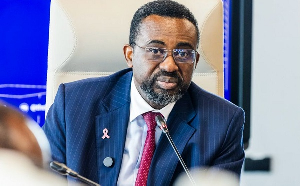The African Continental Free Trade Area (AfCFTA) Agreement is touted to be the World’s largest Free Trade Area since the establishment of the World Trade Organization (WTO) in 1994 due to its proposed membership of 55 countries consisting of over 1.2 billion people with a combined Gross Domestic Product of about $3.4 trillion which has a potential to lift 30 million people from extreme poverty and boost income by $5.50 a day for nearly 68 million people.
The AfCFTA is an initiative under the auspices of the 18th Ordinary Session of the Assembly of Heads of State and Government of the African Union (AU) held in Addis Ababa, Ethiopia. The AfCFTA is to form a free trade area (FTA) which will be advanced to form a Common Market by allowing the free movement of goods, persons, and capital.
The judicious objectives in the policy framework are to integrate and liberalize markets to enhance competitiveness, encourage industrial development through diversification, achieve social-economic development, improve upon gender equality, embark on structural transformation, encourage regional value chain, ensure food security, outpace agricultural development, and serve as a bridge to existing shortfalls hindering intense trade across the Regional Economic Communities (REC’s).
To achieve these objectives, The AfCFTA Agreement is ingrained with three fundamental protocols namely Protocol on trade in goods, Protocol in services, and the Protocol on Rules and Procedures on the Settlement of Disputes. The anticipated effect will be a reduction in the level of poverty, unemployment rate, and the elimination of hostile trade practices to accelerate economic growth and development.
According to UNCTAD (2020), intra-regional trade in Africa is consistently below 19% of total trade as compared to Europe of 68%, Asia of 59.6 %, and America of 54%. These substandard African intra-trade flows are attributed to multitudinous tariffs, exacerbated non-tariff barriers, relatively poor diversification of the economies, second-rate trade, inadequate transport infrastructure, limited access to capital, relatively high cost of electricity, and the compounding effect of sovereign currencies.
As a result, Africa has failed to achieve the 8th Sustainable Development Goal of a 7% growth rate target.
Empirical studies have shown that regions heavily characterized by these barriers tend to experience a high level of unemployment and retarded economic development. As a result, the AfCFTA Agreement was proposed to raise the level of intra-trade among African countries by gradually removing all trade barriers. In this background, the United Nations Economic Commission for Africa (UNECA) estimated the AfCFTA to have the prowess to boost trade of over 52% if barriers are removed by the year 2022.
Phase 1 of the Agreement is on trade protocols, trade facilitation, dispute settlement procedures, customs cooperation, and rules of origin. Given this, the 12th Extraordinary Session of the AU activated the five operational instruments namely; the Rules of Origin; the online negotiating forum; the monitoring and elimination of non-tariff barriers; a digital payments system, and the African Trade Observatory.
Phase 2 covers investment, competition, and intellectual property under negotiation. The negotiations and the instrument of ratifications on the agreement were expected to be finalized by the end of the year 2020 and scheduled to be operational on 1 January 2021.
However, the contemporaneous lethal effect of the COVID-19 led to elapses in the policy initiative. Despite the challenges purported to be faced in its implementation, the policy is expected to be fully-fledged by 2030.
To induce relatively greater welfare from the policy, there is the need to actively indulge the private sector by forming Regional Economic Communities (RECs) cartels of domestic investors to intensify investment in the production of a good which is assigned the Rule of Origin.
Also, policy initiatives should be laid out to avoid trade deflection in the early stages of implementation. Thus, the need to prevent foreign investors from shipping goods to low-tariff countries and later transship to high-tariff countries at a tariff-free rate.
Additionally, a convertible currency of a member-state should be agreed upon as the dominant trading currency to avoid exerting downward pressure on domestic currencies which has the potential to adversely affect the level standard of the populace.
Opinions of Tuesday, 30 March 2021
Columnist: Abban Stanley















